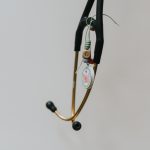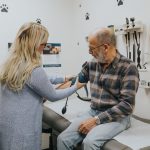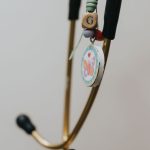Share
Are you up to standard? The importance of working together for patient safety
Back to MessengerRead time: 2 minutes
Whether it’s retirement, moving to a new city or a variety of other personal reasons, physicians may need to close or leave their medical practice or change their pattern of practice (e.g., hours or scope).
Whether the reason behind the change is exciting or stressful (or a bit of both), the duty of care to patients is still a top priority. As stated in clause 3 of the Closing or Leaving a Medical Practice standard, “a regulated member who closes or leaves a medical practice must arrange follow-up on any outstanding investigations, test results or reports to ensure continuity of care.”
With practice demands high and resources thin, doing the right thing is imperative to maintain patient safety to prevent another tragic loss like that of Greg Price. The Price family has been generous in sharing Greg’s story in a short film called Falling Through the Cracks: Greg’s Story, which can be viewed online.
Communication is key
Notify CPSA, patients, colleagues/specialists you work with regularly and other healthcare providers about your practice change to make the transition as smooth as possible for your patients. To further support continuity of care, you may also want to notify the office staff of colleagues and specialists.
Colleagues who can help with the transition should receive details of the accompanying arrangements to ensure all expectations are clearly communicated. You can encourage patients to sign up for MyHealth Records through the Government of Alberta so they can gain access to results and action them on their own after your last day.
Managing investigations, test results and reports
Departing physicians remain responsible for items such as outstanding investigations, reports, test results and standing orders for lab requisitions. This may look like retaining access to the electronic medical record (EMR) for a reasonable length of time (e.g., three months after the last day of practice) so you can review results periodically or having a colleague(s) review results for you.
Electronic Medical Record (EMR) management
During the initial phase of absence, you should retain access to EMRs for a limited time (e.g., three months). With the challenges of ongoing EMR access, identify a colleague to take over follow-up on outstanding healthcare items if you are unable to monitor the EMR.
Supporting departing colleagues
When helping a departing physician, the following tips will support continuity of care while also keeping personal workloads and priorities in mind:
- Set boundaries. Just because a supporting physician is reviewing results for a departing physician’s patient does not mean they are obligated to take the patient into their panel.
- Manage expectations. Inform the patient that the assisting physician is not taking them onto their panel. Rather, they are supporting the patient through the transition.
- Provide advice. Notify patients of next steps and provide resources. If applicable, let patients know they need to follow up with another healthcare provider (such as a walk-in clinic, a new healthcare provider, etc.)
Developing a plan to support a physician’s departure and engaging in open communication with patients, colleagues and other healthcare providers will make all the difference for everyone involved. Teamwork and collaboration are the key to implementing a successful professional transition and will help ensure the affected patients are provided with support for the continuity and level of high-quality care they receive.
Questions?
We have updated the Closing or Leaving a Medical Practice Advice to the Profession document with more guidance on this topic, but CPSA team members are here to help as well. Contact support@cpsa.ab.ca for more information.




















Comments for this post are now closed. If you would like to share your feedback on this topic, please email support@cpsa.ca.